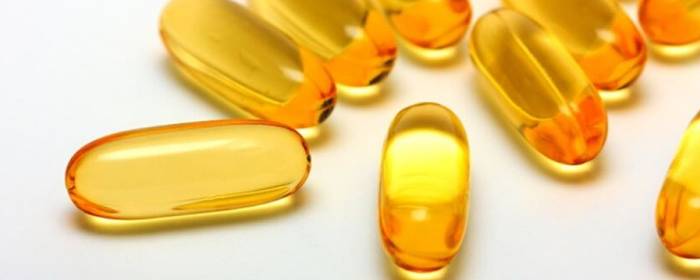
by admin | Mar 23, 2019 | Hyperbaric Oxygen Therapy, Parkinson's Disease, Stem Cell Therapy, Studies
Parkinson’s disease is widely known as a neurological condition that causes motor symptoms. Typically, patients with Parkinson’s disease have pill-rolling tremor, cogwheel rigidity, and a shuffling gait. However, about half of all patients with Parkinson’s disease also have psychiatric symptoms such as anxiety and depression. It can be challenging for patients and caregivers to deal with Parkinson’s disease, but if anxiety and depression are also present, it can make matters worse. When psychiatric symptoms occur, they can make Parkinson’s disease more difficult to treat, increase the burden on caregivers, and greatly reduce quality-of-life for patients.
One of the things that make psychiatric symptoms so difficult to treat in patients with Parkinson’s disease is that doctors have limited treatment options. The antidepressants that they would normally use to treat depression and anxiety can make motor symptoms of Parkinson’s disease worse. People with Parkinson’s disease often struggle with sleep disturbances, and typical antidepressants can make sleep problems worse, too. Not surprisingly, many patients with Parkinson’s disease suffer from depression and anxiety and never find adequate treatment.
Physicians recently reported their experience with a patient with Parkinson’s disease who they treated with hyperbaric oxygen. The man had struggled with Parkinson’s disease for 1.5 years and had slipped into a severe depression. He had lost interest in pleasurable activities, was only sleeping about 2 to 3 hours each night, unintentionally lost over 40 pounds, and was having thoughts of suicide. He also had significant anxiety issues that made his life very difficult. Regular drug and psychotherapy treatments for anxiety and depression did not work for this man, so physicians were left with few options.
The man with Parkinson’s disease, severe depression, and anxiety underwent 30 days of hyperbaric oxygen treatments. He inhaled pure oxygen in a hyperbaric chamber for 40 minutes per session at 2 atm of pressure. In as little as four days of hyperbaric oxygen treatment, the man was sleeping better and longer than he did before treatment. His mood has also improved.
After 30 days of hyperbaric oxygen treatments, the man was able to sleep for 8 to 10 hours a night. Not only did his psychiatric symptoms improve, but his Parkinson’s disease symptoms also improved. While he still had Parkinson’s disease symptoms after hyperbaric oxygen treatment, the symptoms had improved substantially.
When physicians followed up one month after treatment had ended, the patient was still sleeping through the night, his mood was good, and he did not need assistance with his activities of daily living.
It is important to remember that this is a case study, the results of a single patient. Nevertheless, the improvements in both Parkinson’s disease and severe symptoms of anxiety and depression are incredibly impressive. For this man, at least, hyperbaric oxygen therapy had a substantial positive effect in his life where other treatments had failed.
Patients can also combine Hyperbaric Oxygen Therapy with Regenerative Medicine. Regenerative Medicine is an alternative option to help manage the symptoms of Parkinson’s Disease. The stem cells have the potential to replicate and repair numerous cells of the body, including those damaged by Parkinson’s. These advancements in the treatment of Parkinson’s Disease work to fully regenerate missing or damaged tissue that the body would not ordinarily regrow.
Call your dedicated Care Coordinator at 800-531-0831 for more information.
Reference: Xu, Jin-Jin et al. (2018). Hyperbaric oxygen treatment for Parkinson’s disease with severe depression and anxiety. Medicine. 2018 Mar; 97(9): e0029.

by admin | Nov 1, 2018 | Health Awareness
For people living with essential tremor, the condition’s rhythmic and involuntary shaking which occurs upon movement can be frustrating. While it primarily affects the hands, the voice, head, and arms may also be impacted. Treatment options for the condition are limited, with beta blockers, Botox injections, and anti-seizure medications among the few methods available to help. More frustratingly, a mere 60% or less of patients found medication helpful. The potential ineffectiveness and side effects of these drugs often make them an unpopular option among people with essential tremor.
Recently, however, researchers have discovered an alternative treatment option which could help. A study published by the British Medical Journal showcases the results of two individuals with essential tremor who received high-dose vitamin B1 injections over the course of three years. The patients were treated with two extremely high doses of the vitamin (100 times the daily recommended dose) twice per week.
Results were astonishing, with patients experiencing noticeable improvement after three months of the vitamin injections. Tremors improved significantly, which could suggest a highly effective, and affordable solution may soon be available to patients.
Doctors advise patients to proceed with caution when taking vitamins, however. It’s particularly important to receive physician oversight when pursuing mega-doses such as these, as there is always a risk for adverse health effects including interactions with other medications. With that said, B vitamins are water-soluble, meaning any that aren’t used by the body is excreted with urine. Fat-soluble vitamins, on the other hand, could cause toxicity if taken in excess. Unlike water-soluble vitamins, these are retained in the body’s fat stores and could, therefore, lead to serious health complications if taken in high doses.
Because of the study’s limited scope, more research will likely need to be conducted before physicians can begin administering vitamin treatments for patients with essential tremor. Nonetheless, the results we’ve seen appear to hold promise, especially considering the shortcomings of existing treatment methods.
Stem cell therapy has shown potential benefits for those with Parkinson’s disease in helping manage tremors. Contact a Care Coordinator for more information on how regenerative medicine could be an option for helping manage your condition.

by admin | Sep 26, 2018 | Health Awareness
Coenzyme Q10 (CoQ10) is an antioxidant occurring naturally in the body. It is critical to the growth and maintenance of cells and is found to be lower in individuals with conditions such as Parkinson’s disease and Huntington’s disease. Research shows that taking CoQ10 supplements in combination with creatine may benefit individuals with these neurodegenerative conditions – but why?
CoQ10 & Creatine
Both CoQ10 and creatine are commonly found in meat and seafood. The body produces creatine naturally as well, in the kidneys, liver, and pancreas. It is an amino acid located in the brain and muscles, where it is used for energy. Together, both CoQ10 and creatine have neuroprotective effects. When taken in conjunction, they have been shown to improve motor performance and reduce DNA oxidative damage. They work by protecting against dopamine depletion and reducing lipid peroxidation, or the cellular damage caused by free radicals. CoQ10 and creatine have also been shown to reduce the volume of lesions found on the striatum, a part of the brain responsible for many aspects of cognition, including motor and action planning and decision making. In conditions like Parkinson’s disease, this area of the brain is compromised, resulting in symptoms such as tremors and slow movement. With Huntington’s disease, the degeneration of brain cells in this area causes progressive dementia.
How Should I Take CoQ10 & Creatine?
While CoQ10 and creatine can be ingested through food, they are found in minimal amounts in nutritional sources. Thus, eating more meat or seafood alone is unlikely to help you produce more of the antioxidant and amino acid. With that said, findings suggest that they can be taken as supplements as a form of combination therapy to treat neurodegenerative diseases. Moderate daily doses of CoQ10 (500-800 mg) in contrast with high doses (2,700 mg) in particular have been shown to yield mild to moderate improvements in symptoms like fatigue and muscle tone. Creatine has been shown to provide benefits for patients suffering from muscle-related pain. Before taking either CoQ10 or creatine, it is important for patients to discuss proper dosages and potential symptoms with their physicians for their ensured safety.

by admin | Sep 20, 2018 | Health Awareness
Avocados have long been hailed as a food source rich in vital nutrients. Not only is it loaded with almost 20 vitamins, minerals, and phytonutrients, but it also has just 80 calories per serving. Yet, aside from its “superfood” status, could this unique stone fruit hold even more power to boost wellness? Research seems to suggest so.
Phytochemicals in Avocado
According to an article in Advances in Neurobiology, avocados’ high concentration of phytochemicals could play “a pivotal role in the prevention and cure of various neurodegenerative diseases.” Phytochemicals are biologically active compounds found naturally in plant sources, many of which have antioxidants and free radical scavenging effects. Research has also pointed to their ability to improve the functionality of the endothelium or the cells that line the interior of blood vessels. With a host of beneficial properties, they are shown to reduce risks for non-neurodegenerative diseases as well, including cancer, inflammatory conditions, and type 2 diabetes.
How Phytochemicals Benefit Neurodegenerative Diseases
What researchers are now discovering is that in addition to reducing inflammation and attacking free radicals, these phytochemicals also seem to specifically exhibit neuroprotective effects. Overproduction of free radicals can lead to oxidative damage to important biomolecules such as DNA and proteins, which eventually lead to the development of degenerative diseases. Reactive oxygen species resulting from free radical damage can also become active in the brain and neuronal tissue, leading to oxidative stress. Researchers have determined that oxidative stress is a causative agent behind the development of neuronal damage, which is present in neurodegenerative diseases such as Huntington’s disease, Parkinson’s disease, amyotrophic lateral sclerosis (ALS), and Alzheimer’s disease. Interestingly, studies show that the antioxidants found in avocados are unique, and have been shown to reduce neuronal death.
To maximize the benefits of avocados, the Food and Drug Administration (FDA) updated its daily recommended serving to 1/3 of a medium-sized fruit in 2016. This allows consumers to reap significant nutritional benefits from the antioxidative properties of Vitamin C, vitamin E, and other components without ingesting too many calories from fats. The creamy, fiber-rich fruit is often served atop salads, toast, and even enjoyed raw.

by admin | Aug 1, 2018 | Health Awareness
Melatonin has long been hailed for its health benefits, and the more researchers study the hormone, the more its broad range of abilities is revealed. Known as “the sleep hormone,” the power of melatonin goes far beyond simply regulating sleep patterns. Scientists believe it could also play a role in managing chronic conditions like heart disease and diabetes, and that it may even promote bone health and reduce obesity. Most recently, it has been discovered that melatonin could help safeguard genetic material and protect against age-related disease and health decline. Here, we take a closer look at how the hormone works to boost wellness.
A Disease-Fighting Hormone
Free radicals are chemically reactive molecules which are linked to a host of diseases, including Parkinson’s disease, Alzheimer’s disease, and cancer. We encounter them on a daily basis, as they are found in everything from the air we breathe to medications and foods. Reducing the volume of free radicals in the body is therefore critical to preventing and managing diseases. One of the ways the body fights off free radicals is through antioxidants, the substances that counteract them.
According to research, melatonin is a potent agent in antioxidative defense. It can enter any bodily fluid or cell and actively scavenge free radicals, and it also has the ability to influence circulation. In addition to fighting free radicals, melatonin can reduce the generation of these dangerous molecules and simultaneously protect critical functions of the cells.
Research also suggests that melatonin’s ability to prevent oxidative damage, specifically in brain cells, make the substance a prime candidate for treating conditions such as Alzheimer’s disease, amyotrophic lateral sclerosis (ALS), Huntington’s disease, stroke, and brain trauma.
Where is Melatonin Found?
Melatonin was first discovered as a hormone of the pineal gland, but it is also produced elsewhere in the body. Specifically, the gastrointestinal (GI) tract is a rich source of the hormone, with its tissues holding 10-100 times as much of the hormone than the blood. The GI tract also has at least 400 times more melatonin than the pineal gland.
Certain types of food are also natural sources of melatonin, including ginger, rice, bananas, barley, sweet corn, and Morello cherries. Additionally, over-the-counter melatonin supplements are available, but it is recommended that anyone considering a supplement regimen consult their doctor. Certain individuals, including women who are pregnant or breastfeeding, may not be advised to take the supplement.






 St. Petersburg, Florida
St. Petersburg, Florida
